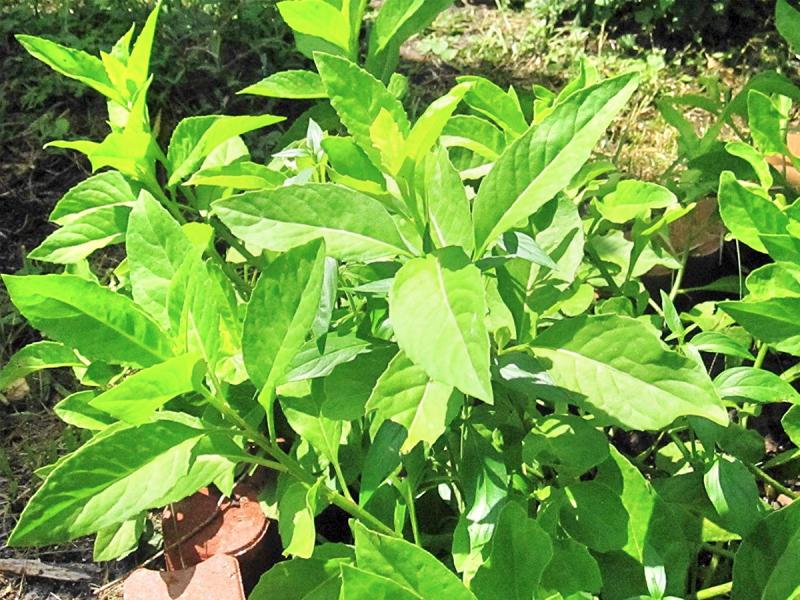Longevity is something gardeners strive for in plants, and perhaps in life as well. As George Burns said,”If you live to be 100, you've got it made. Very few people die past that age.”
There is a new vegetable in town, the Longevity Spinach, or Gynura (Gynura procumbens), that promises to keep you healthy no matter what your age. This perennial claims to lower blood pressure, and lower blood sugar in diabetics but not affect normal blood sugar levels in non-diabetics. It has been clinically shown to also lower blood cholesterol and triglycerides, as well as having anti-inflammatory and antiviral properties. This tasty plant protects against ulcers as well as helping existing lesions heal. It is even said to protect kidney cells from kidney disease.
Longevity spinach (also called Moluccan spinach, Sambung nyawa, and Daun dewa) is a low-growing, semi-succulent plant that creeps along the ground but can be contained in a pot for a windowsill garden. Since it is a tender plant, it is only hardy in USDA zones 10-11.
The young, slightly fuzzy leaves are tender so they can be eaten fresh in salads, added to smoothies, soups, stir-fries, or made into tea. The taste is similar to spinach. When it is cooked, the leaves are slightly viscous, similar to okra, and like okra, it can be used to thicken sauces, stews and soups. You can use this in any recipe calling for spinach. It is tender enough to use instead of lettuce in sandwiches. The crunchy stems can substitute for celery.
Hang it outdoors or put it on the patio during the summer, where it might bloom with fragrant daisy-like flowers that attract bees, butterflies and hummingbirds. Indoors, give the plants a medium-sized pot filled with rich potting soil that drains well. Put them where they get lots of sunlight, but away from drafts or heating vents. Keep the soil slightly moist, but not soggy. Longevity Spinach will climb if you let it, but it grows just as easily trimmed into a bush shape.
Longevity Spinach is quite easy to grow and propagates readily from cuttings placed in water. You can also take cuttings with two or three leaves attached, dip the cut end in rooting hormone powder, and plant them immediately in moist soil. Mist the cuttings every day so they don't dry out, and they will root within a week or two. For lush growth, fertilize every few weeks with a liquid organic fertilizer. Let the top one inch of soil dry out in between waterings. During the winter when growth slows down, you can cut back on watering.
Chickens readily eat Longevity Spinach, so you may want to plant some in the spring and summer right outdoors where they can eat to their heart’s content. This edible houseplant is pretty much pest-free. If by chance you do see whiteflies or mites, simply wash them off under the sink or use an organic pesticide like Neem oil.
The only hard part about growing Longevity Spinach is finding plants to start with. Check with local nurseries or order cuttings and young plants online.
Pot up some Longevity Spinach and start enjoying healthy smoothies, soups and stews. With luck, your plant might even bloom, though as George Burns cautions, “At my age, flowers scare me.”




















































